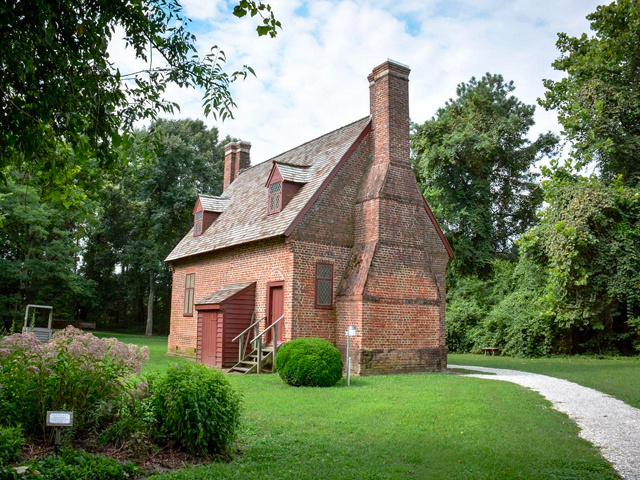Be In The Know
The Ripple Effect: Behind the Scenes of the Rosemont Forest Pump Station
Learn how pump stations operate, what it takes to keep them running and the crucial role they play in flood protection.

Ever wondered how stormwater pump stations work or what it takes to ensure they stand ready to protect us from floods? It's easy to take for granted the crucial role they play in our daily lives... until we need them.
Here is a closer look at pump stations, how they work, and what it takes to keep them running. The Rosemont Forest Stormwater Pump Station, located near the intersection of Indian River Road and Lynnhaven Parkway, is the perfect example to offer an insider’s look at the typical routine of operating and maintaining these unsung heroes of flood protection.
What Are Pump Stations, and How Do They Work?
Pump stations are essential components of the drainage systems that help prevent floods and protect communities. It begins with stormwater runoff entering the system through drains, canals, ditches and other sources as a result of fast falling rain. In some cases, as water moves further through that system, it eventually reaches a retention pond. Pump stations, along with these retention ponds, act in a tag-team fashion to manage water levels, ensuring water storage capacity is available when it’s needed.
From the retention pond, the excess water is drawn into the pump station, which then pumps the water through a discharge system, keeping water away from yards and streets and safely redirecting it back into rivers, bays and oceans. In the case of the Rosemont Forest Stormwater Pump Station, large volumes of water are safely discharged to Stumpy Lake. In fact, this pump station has a discharge capacity of 70 cubic feet per second.
That’s like pushing 70 water-filled medicine balls per second through the system. Per second! Need a clearer picture? Olympic-sized swimming pools can hold 500,000 gallons of water, meaning the discharge flow rate at Rosemont Forest Stormwater Pump Station could fill four Olympic-sized pools in one hour. Another pump station currently in the works for Windsor Woods is designed with a flow rate that is 10 times faster (750 cubic feet per second). It could fill up to 360 Olympic-sized pools in an hour.
Routine Operation and Maintenance at Pump Stations
Ensuring pump stations are always ready demands attention to detail and a meticulous routine of operation and maintenance. At the Rosemont Forest Stormwater Pump Station, City staff’s typical routine includes:
- Daily and weekly maintenance and inspection of backup generators for power and pumps.
- Status checks of facility systems, including water level sensors, system alarms, and automated programming.
- Observing and logging equipment run times.
- Inspecting power circuit panels for pumps and controls and fixing any faults.
- Checking the water levels in the retention pond vs. Stumpy Lake on monitoring panels.
- Inspecting float sensors and repairing or replacing them as needed.
- Keeping pump intake grates free of debris.
- Manually operating pumps at least once a month to ensure they remain functional.
- Ensuring the physical safety and security of the facility.
“Onsite inspections are just one of the ways we monitor these systems,” said Chris Jenkins (“C.J.”), Public Works maintenance mechanic, who keeps tabs on things at the Rosemont Forest location. “Smartphone and tablet apps also provide us with 24/7 access to critical system notifications and alarms.”
Why Is Routine Maintenance So Essential?
The routine maintenance of pump stations is vital to ensure their continued effectiveness. Neglecting any part of the maintenance process can lead to equipment failures, decreased operational efficiency, and ultimately, flooding. By carrying out regular checks on the pumps, controls, and sensors, staff can detect issues early on and prevent them from developing into bigger problems. Ongoing maintenance also helps increase the lifespan of equipment, saving time and money on repairs and replacements in the long term.
"The idea of controlling water isn’t new,” said Jonas Alered, P.E., Public Works stormwater operations engineer. “It dates back as far as ancient Roman civilizations. Obviously, the technology has come a long way since then, and these pump stations remain a workhorse of City drainage systems.”
Under the City’s Flood Protection Program, a total of nine additional pump stations will be constructed throughout Virginia Beach by the end of 2032.
The Virginia Beach Flood Protection Program—The Ripple Effect—is a comprehensive 10-year plan to address recurrent flooding in Virginia Beach. In November 2021, Virginia Beach voters overwhelmingly supported a resiliency package for several key flood protection initiatives to include drainage improvements, tide gates, pump stations and flood barriers throughout the city. The projects are led by Public Works with support from a community oversight board for transparency and accountability. Learn more at virginiabeach.gov/RippleEffect.
Contact Information
Keep Reading
See All Posts-
Calendar News Blog Hot Topics Multimedia Social Media Mobile Apps











